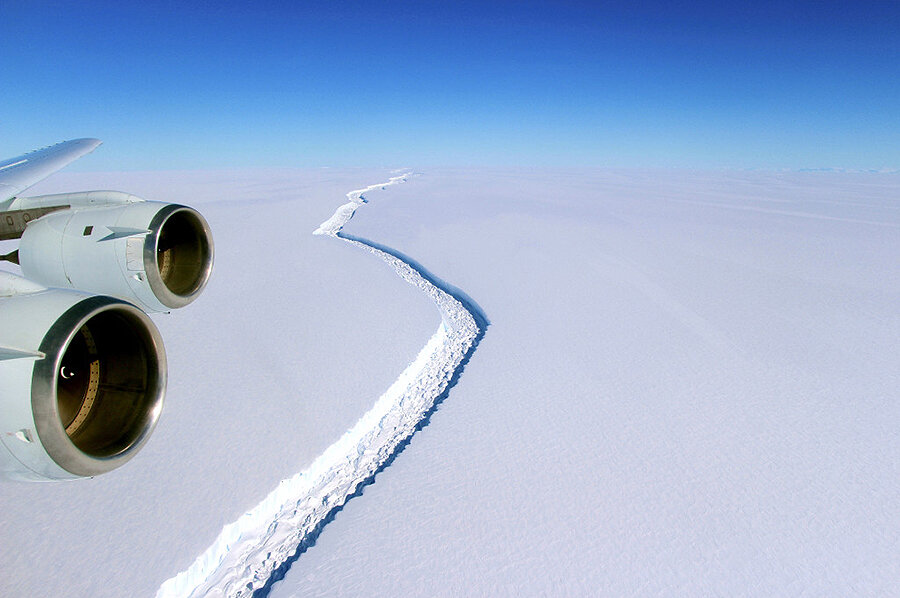As Antarctic ice shelves shrink, 'shelfwatchers' await major break-off
Loading...
Sometime in the 1960s, a tiny crack emerged in Antarctica’s Larsen C ice shelf. Today, it’s more than 100 miles long, two miles wide in places, and growing at a rate of five football fields per day. Only 12 miles now connect the soon-to-be iceberg to Larsen C.
Several media outlets, including The Christian Science Monitor, have been on “shelfwatch” for months, as scientists expect an iceberg the size of Delaware to break off from Larsen C in the near future. That would mark one of the largest such events on record, joining similar break-offs from Larsen A and B. Almost 600 square miles of ice separated from Larsen A in 1995, and in 2002 more than 1,200 square miles broke from Larsen B, whose shrinkage is captured in a new satellite image.
The breakup itself likely won’t contribute to sea level rise, however, "as the Larsen C shelf already floats in the ocean," as the Monitor's reported last month. "It can't affect water levels any more than a melting ice cube can cause a glass to overflow."
But scientists say the collapse of ice shelves can indirectly drive sea level rise.
“You can think of the Larsen or really any ice shelf like it is a cork in the neck of a champagne bottle lying on its side,” scientist Christopher Shuman explained in a NASA release.
Ice shelves sit over the ocean, but are fed by land-based glaciers. They also keep those glaciers from flowing directly into the sea.
“Once you pop that cork,” Dr. Shuman continued, “the wine inside – all that glacial ice sitting on land – will start flowing out. And that’s worrisome because such thinning land ice is directly increasing global sea levels.”
That’s not the only way that collapses like these encourage sea level rise, though. When ice shelves or glaciers melt, they flood the ocean surface with cold fresh water that doesn’t mix very well with lower levels of the ocean.
As a result, the ocean becomes “stratified,” with a cold surface and relatively warm lower levels. This, in turn, means that glaciers exposed to the ocean face greater heat below the surface, in addition to warmer air temperatures, leading to stronger melt.
Some 14,000 years ago, this process caused the rapid breakup of Antarctica’s ice sheets and a nearly 10-foot rise in sea level, according to a study published in January by scientists at Australia’s University of New South Wales. And global warming may have created the right conditions for those changes to happen again.
This rapid melting has an ironic side effect: As the ocean surface around Antarctica gets colder and fresher, the actual sea ice expands. NASA observed “three record high extent years” of sea ice from 2012 to 2014.
But this expanded sea ice cover doesn’t mean Antarctica’s stressed glaciers will get a reprieve. “Sea ice formation is a function of sea surface conditions but the water that rapidly melts glaciers is often found below several hundred meters of water,” geophysicist Dr. Jamin Greenbaum told The Washington Post in 2015, adding that “increased sea ice extent doesn’t necessarily have a direct effect on coastal glacier melting.”








